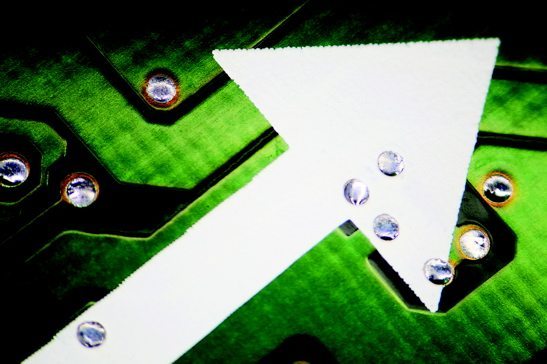Intel. Boeing. The Mayo Clinic. Try finding anyone who hasn’t heard these renowned names. Fortunately for Arizona, they and other companies like them have been key to our state’s technology scene growing dramatically over the past quarter century.
There is one name, however, many may have forgotten. Although no longer a huge presence here, one company paved the way for others, as well as gave birth to offspring that garnered their own recognition. Its name? Motorola.
After World War II, the Signal Corps asked officials at radio communications pioneer Galvin Manufacturing Corp. to move parts of their operations out of Chicago for fear an atomic bomb could wreck needed production capabilities. Following the Windy City’s snowbirds, Motorola headed West and eventually built its landmark 56th Street facility in Phoenix, signaling the start of phenomenal growth. Eventually creating other electronics as well as semiconductors, the company grew to more than 20,000 Arizona employees at locations across Phoenix and the East Valley. You could argue that our high tech golden era began a little more than 25 years ago, when Motorola unveiled a device that changed the world forever: the portable cellular phone for commercial use.
Another significant presence began when the Valley proudly proclaimed “Intel Inside” and the company’s “fab” plants and related campuses became part of Chandler’s landscape. Now using the innovative 45nm technology, Intel is the city’s largest employer and has about 10,000 employees in the state.
Also in the mid-80s, biotechnology research started with the opening of Sun Health Research Institute in Sun City. The following year, the Mayo Clinic opened its campus in Scottsdale. The next year, Arizona State University granted master’s and doctorate degrees in bioengineering.
When it came to getting the United States and other nations into orbit and keeping them secure, the world already had discovered Arizona. Key to that reputation is Honeywell. In 1986, it purchased Sperry Aerospace and became the world’s leading integrator of avionics systems. At the end of the 1990s, Honeywell made major headlines again when it merged with AlliedSignal. When the dust settled, Honeywell Aerospace called Phoenix its home.
Tucson-based Raytheon Missile Systems also claimed a piece of history when its Patriot missile became the star of the Persian Gulf War.
By the end of the 20th century, Boeing was ready for the next conflict, as its Apache Longbow helicopter took off.
The new millennium brought a new order and the beginning of the end for Motorola as we knew it. After ON Semiconductor was spun off, the company sold its Scottsdale-based government IT division to General Dynamics, and its life-sciences arm to Britain’s Amersham. Motorola spun off its Freescale Semiconductor operation in 2003, shrinking Motorola’s Arizona payroll to 3,500. Some observers now put that number at 500 after Emerson Network Power acquired the Embedded Communications Computing group in Tempe last year.
The real growth was happening in biotechnology. One of the biggest coups occurred when the International Genomics Consortium announced it was moving to Phoenix to create the Translational Genomics Research Institute. Also in 2002, Arizona’s Bioscience Roadmap, commissioned by the Flinn Foundation, began outlining recommendations for the state to become a national biosciences leader.
ASU and the University of Arizona joined the effort. The first building of ASU’s acclaimed Biodesign Institute opened in late 2004, followed by the facility’s completion two years later. UA’s BIO5 Institute was launched to pursue life sciences research.
As you can see, the infrastructure is in place for the future to bring even more. Everyone has a chance to share the rewards. The technology industry is viewed as the bright spot of what has been a dismal economy. Arizona companies already are reporting new hires to help serve new contracts. There’s no doubt we live in a top-tier technology state.




